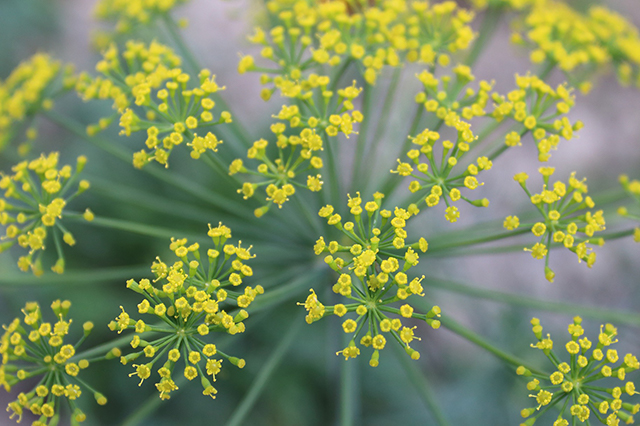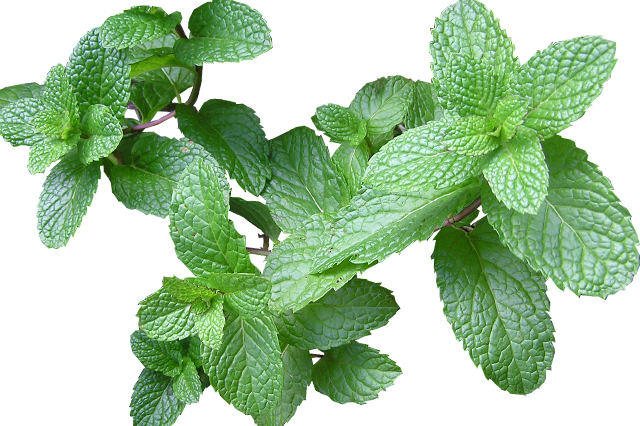Avoid planting slow-growing, inactive or unattractive herbs in your hanging garden. Knowing which herbs grow best in a hanging garden will ensure you harvest fresh herbs consistently.

gardeninginfo-online.com gathered information about seven popular herbs that thrive in a hanging garden environment.
Why Hanging Gardens?
Since ancient times when the Hanging Gardens of Babylon were deemed one of the world’s seven wonders, hanging gardens have been a popular go-to for home gardeners with limited space.
Whether you have hanging pots and containers along the border of your balcony or a wall-mounted series of indoor planters, the following seven herbs will flourish while providing fresh, tasty, and aromatic seasonings for your food.
1 – Lavender (Lavandula)
Lavender is a perennial flowering herb that’s native to the Western Mediterranean. Different varieties of lavender plants flourish in different hardiness zones. Still, most of the lavender species are hardy in Zones 5 to 11.
(Full sun and well-drained soil) Lavender thrives in low to moderately-fertile soils. Avoid amending the soil with organic matter before planting. Lavender will perform best in neutral to slightly alkaline soils.
Harvesting lavender flowers in early spring will allow the plant enough time to produce another round of blooms in late summer to fall.
2 – Dill (Anethum graveolens)

Dill is an annual herb belonging to the celery family and is the only species in the genus Anethum. Dill is grown widely in Eurasia, where its leaves are used as an herb, and its seeds are used as a spice for flavoring food. Being rich in antioxidants and an excellent source of vitamin C, magnesium, and vitamin A, dill may possess multiple health benefits, including protection against heart disease and cancer. This species is hardy in zones 2 to 11.
(Full sun and moist, well-drained soil) Dill thrives in slightly acidic soil, rich in organic matter. Growing dill indoors is possible, as long as you provide enough light.
Indoors, dill plants should be located where they will receive at least 5 to 6 hours of direct sunlight daily. Your dill should be ready for harvest within 8 weeks after sowing the seeds.
3 – Basil (Ocimum basilicum)
Basil is a culinary herb in the Lamiaceae family. Basil is native to tropical regions from Central Africa to Southeast Asia. This tender plant is used in cuisines worldwide. There are multiple basil varieties and several related species, also referred to as basil. Most basil species are hardy to zones 10 to 11.
(Full sun and moist, well-drained soil) Basil plants thrive in rich soil with lots of organic matter, such as compost, and require a pH of 6.0 to 7.0.
Begin harvesting basil at any time by clipping fresh young leaves as needed. If you want to harvest whole stems, make your cut just above a pair of leaves, and the ensuing new growth will occur at the cut point.
4 – Chives (Allium schoenoprasum)
Chives belong to the same family as onion, leeks, and garlic. They are a tough, drought-tolerant perennial reaching about 10-12 inches in height. They tend to grow in clumps from underground bulbs and produce fine, round, hollow leaves. This species is hardy to zones 3 to 9.
(Full sun and moist, well-drained soil) Chives thrive in soil rich in organic matter. A soil pH kept between 6.0 and 7.0 is best. This species tolerates light shade but thrives with six to eight hours of direct sunlight daily.
Harvest your chives throughout the growing season to prevent the leaves from toughening and to encourage the formation of new bulbs. Cut leaves at the base about an inch above the soil.
5 – Cilantro (Coriandrum sativum)
Cilantro, also known as Chinese parsley, dhania, or coriander. All parts of this plant are edible, but the fresh leaves and the dried seeds are the parts most traditionally used in Mexican and Indian cooking. This herb species is hardy to zones 2 to 11.
(Full sun – until summer then partial sun – and moist, light, well-drained soil) Cilantro will grow best in airy, light, fast-draining soil with perlite or sand mixed in to increase its drainage. In a container, you should use a premium potting mix with a 6.5pH rather than regular garden soil.
The best time to harvest cilantro leaves is in the morning. Harvest them once a week or take individual leaves when needed.
6 – Mint (Mentha)

Like basil, mint is a genus of plants in the Lamiaceae family or mint family. Mint is a creeping plant that sends out shoots underground, and most varieties of this species will grow as a perennial in zones 3 to 8.
(Full sun or part shade and moist, well-drained soil) Mint is a vigorous grower that likes organically-rich soil with a neutral pH of 6.0 to 7.0.
Harvest mint foliage at any size by pinching off stems. For a large harvest, cut the whole plant to just above the first or second set of leaves.
7 – Rosemary (Salvia rosmarinus)
Also a member of the Lamiaceae family, rosemary is a shrub with fragrant, evergreen, needle-like leaves and white, pink, purple, or blue flowers. It is commonly used as a flavoring in a variety of dishes, like soups, casseroles, salads, and stews. This species is hardy to zones 7 to 10.
(Full sun and moist, well-drained soil) Plant rosemary in loamy soil maintained at a pH between 6.0 and 7.0. Add fertilizer or organic material to the soil each spring for enhanced growth.
Harvest rosemary in the spring or summer. Rosemary grows most vigorously at this time, making it the best time to harvest. Take 4 to 6-inch sprigs from branch tips for culinary use and strip the leaves off the stems. Avoid pruning more than a third of the plant at one time.
Hanging Herb Gardens
In this article, you discovered 7 of the more popular herb species that thrive in hanging gardens and their individual growing requirements.
Planting a hanging herb garden makes it so you can harvest fresh flavor and seasonings throughout the growing season and, in some cases, year-round.
Trying to grow all your herbs in the same place with the same conditions will likely cause stunting, wilting, and premature plant death.
Sources:
agrilifeextension.tamu.edu/library/gardening/dill/
plantvillage.psu.edu/posts/3937-lavender-growing-lavender-indoors
extension.umn.edu/vegetables/growing-basil
web.extension.illinois.edu/herbs/chives.cfm
canr.msu.edu/news/the_short_sweet_life_of_cilantro
gardeningsolutions.ifas.ufl.edu/plants/edibles/vegetables/mint.html
plants.ces.ncsu.edu/plants/salvia-rosmarinus/
The post 7 Herbs for Your Hanging Garden appeared first on http://gardeninginfo-online.com.
No comments:
Post a Comment